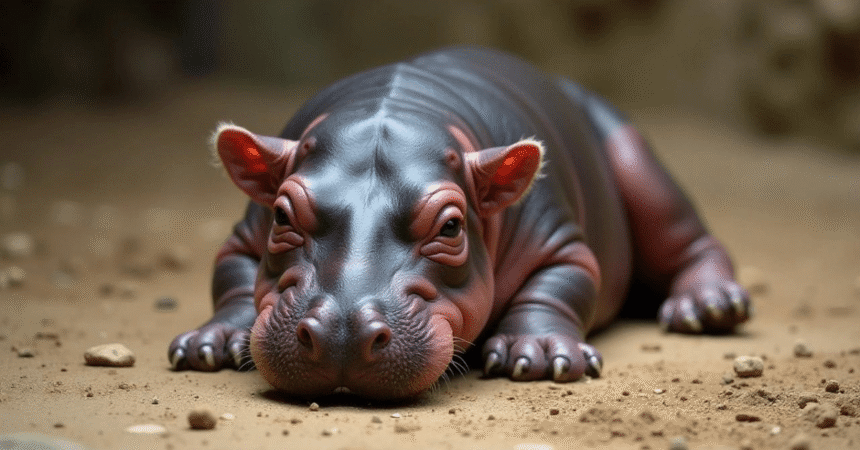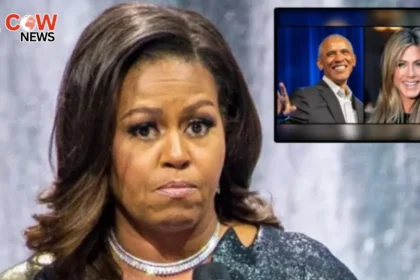In the heart of Thailand’s Khao Kheow Open Zoo, a two-month-old pygmy hippopotamus named Moo Deng has become an internet sensation, captivating audiences with her charming antics. From videos of her playfully chewing on toys to napping in the sun, Moo Deng’s adorable moments have garnered millions of views across social media platforms. Her rapid ascent to fame has not only delighted animal lovers but also raised important discussions about animal welfare and the responsibilities of zoos in managing popular exhibits.
The Making of a Star
Moo Deng was named following an overwhelming response from over 20,000 children and tourists who participated in a voting campaign. This interactive approach has endeared her to the public, as it fosters a sense of community and involvement in the zoo’s activities. Her name, which translates to “Little Pink,” reflects her unique charm and has been a hit among families visiting the zoo.
As Moo Deng’s popularity soared, various companies began to take notice. Brands, including Sephora, have featured her likeness in marketing campaigns, particularly for products with “pink & peachy” themes. This collaboration underscores a growing trend where animals become central figures in promoting products, appealing to consumers’ affection for cute and exotic creatures. While such marketing can boost awareness for conservation efforts, it also raises questions about the ethics of using animals for commercial gain.
Social Media Fame
Platforms like TikTok and Instagram have played a crucial role in Moo Deng’s rise to fame. Her videos, often showcasing her playful behavior, have attracted millions of views, creating a dedicated fanbase that eagerly awaits her latest antics. The emotional connection viewers feel towards her can serve as a powerful tool for conservation awareness, drawing attention to the challenges faced by pygmy hippos, an endangered species with an estimated population of fewer than 2,000 individuals in the wild.
However, the flip side of this fame comes with significant challenges. As Moo Deng’s visibility increased, so did the number of visitors eager to catch a glimpse of her. While enthusiasm is natural, it has led to concerning incidents. Some visitors have reportedly thrown water and objects at her, mistaking playfulness for engagement. Such behavior poses serious risks, not just to Moo Deng’s well-being but also to the overall safety of both the animals and the zoo environment.
Ensuring Safety and Well-Being
In response to these incidents, zoo officials have taken proactive measures to safeguard Moo Deng. Public viewing sessions are now limited to weekends, with each interaction restricted to just five minutes. This decision reflects a careful balance between allowing the public to enjoy Moo Deng while prioritizing her safety and comfort. Zoo director Narongwit Chodchoi emphasized, “These behaviors are not only cruel but also dangerous. We must protect these animals and ensure they have a safe and comfortable environment.”
These restrictions highlight a crucial aspect of modern zoos: the need to prioritize animal welfare, especially when a species is endangered. The challenge lies in managing public interest without compromising the safety of the animals. It is a delicate balancing act that requires constant attention and adaptation to changing circumstances.
The Role of Zoos in Conservation
Moo Deng’s story serves as a reminder of the important role zoos play in wildlife conservation and education. By showcasing endangered species, zoos can raise awareness about the threats these animals face in the wild, including habitat loss and poaching. Educational programs and interactive experiences can foster a deeper understanding of the need for conservation efforts, turning casual visitors into advocates for wildlife preservation.
Moreover, Moo Deng’s situation illustrates the need for responsible practices in handling popular animals. Zoos must develop guidelines that not only enhance visitor experiences but also prioritize the animals’ mental and physical health. This might include creating enriched environments that allow animals to engage in natural behaviors and reducing exposure to stressful situations.
Engaging the Community
Community engagement is vital in promoting a culture of respect towards animals. Educational initiatives that involve local schools and families can help instill a sense of responsibility and understanding about wildlife conservation. For instance, workshops, behind-the-scenes tours, and educational talks can deepen visitors’ appreciation for the animals and the challenges they face.
As Moo Deng continues to capture hearts, the zoo has an opportunity to harness her fame for educational purposes. By sharing her story and the plight of pygmy hippos, the zoo can inspire a new generation of conservationists who understand the importance of protecting endangered species.
The Future of Moo Deng
As Moo Deng grows, the zoo’s challenge will be to adapt to her changing needs while maintaining public interest. This might involve transitioning her from public view as she matures, focusing on her health and well-being. In doing so, Khao Kheow Open Zoo can serve as a model for other institutions, demonstrating that with popularity comes responsibility.
In conclusion, Moo Deng is more than just a cute face; she represents the complex interplay between wildlife conservation, animal welfare, and public engagement. As she continues to capture the hearts of many, it is crucial for all stakeholders—zoo officials, visitors, and brands—to prioritize her safety and well-being. By doing so, they can ensure that her story not only entertains but also educates and inspires action towards protecting endangered species.







